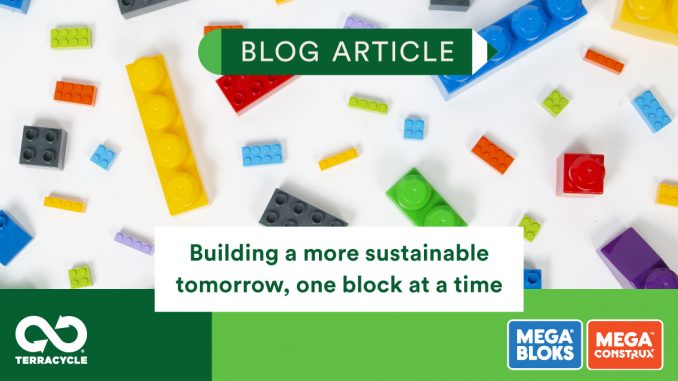
If you’re a parent, you know how kids grow so fast. It’s only natural for them to move through different toys throughout their development years as they learn, explore, and connect through play. As they do, creating teachable moments about the value of playthings can inspire good habits later in life.
Here are some ways to connect with young ones about building a greener future through reuse and recycling.
Buy Durable
Think about the toys you grew up with. What were they made of? Do you ever see them at yard and garage sales, or on shelves at thrift stores? The quality of MEGA™ brand toys by Mattel, for example, have not changed since its inception in the 1980s and are designed to be durable and built to last — passed down, even.
Next time your child asks for a new toy, consider this: Is this toy likely to be quickly forgotten? After they’ve grown out of it, will another child be able to enjoy it?
When you do buy, buy durable and buy timeless, and talk your child through why. Having a conversation outside a simple yes/no can help children understand the power of their decisions at the store. This influences their habits and results in good choices for years to come.
Donate and Swap
Toys that delight children across cultures and ages, like blocks and bricks, not only tend to be shareable and swappable, but also last a long time. Many toys from MEGA™ are developed for kids aged 1 through 8+ and designed to have a long lifespan and can be “reborn” when donated or handed down.
Passing toys down to younger children in the immediate or extended family is one of the first options to explore, then friends and friends of friends. Donation to thrift stores, shelters, and childcare centers are rewarding alternatives, as are consignment or sale. It also teaches children to not just accumulate, but to curate and share.
Whatever you choose, enlist your child’s help in organizing, quality checking, and cleaning thoroughly any toys you send away. This signals their responsibility for an item until the end, and instills a sense of value for items they still have.
Toy Recycling
With all efforts, toys become damaged or broken beyond repair or reuse. With good intentions, adults and children may think to place spent toys in the bin for drop-off or curbside pickup. But, despite many of them being made with plastic, very few are widely recyclable or accepted through local programs.
Toys are often made with a wide variety of plastics, including polyvinyl chloride (#3, PVC), polypropylene (#5, PP), and acrylonitrile butadiene styrene (#7, ABS). Even if those resin codes are accepted, many factors may render them non-recyclable. Reasons include size, color pigment, and a combination of types of plastics. So, always check with your local program to see what they’ll take.
Teach kids about recycling correctly and explain the difference between locally recyclable and recycling through TerraCycle’s national recycling programs. MEGA™ works with us on a free national recycling program for Mega Bloks®, Mega Construx™️ and other non-electronic MEGA™ brand toys.
____
You can help build a more sustainable tomorrow by reusing, reducing, and recycling toys. More importantly, teach children about these practices. Our kids are our future leaders. The habits and sensibilities they develop today will have a positive impact on the environment tomorrow.
Inspired? Learn more: https://www.terracycle.com/en-CA/brigades/blocks-and-bricks-en-ca


Be the first to comment